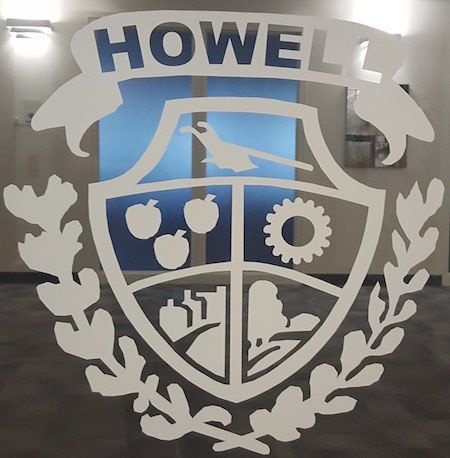HOWELL – Members of the Howell Township Council are trying to prevent invasive plants from becoming an issue in the community.
An invasive species is defined as a species that is non-native (or alien) to the ecosystem under consideration; and whose introduction causes or is likely to cause economic or environmental harm, or harm to human health, according to the U.S. Forest Service.
Council members recently adopted an ordinance that addresses the issue.
Invasive species addressed in the ordinance include Canadian Thistle, Eurasian Watermilfoil, Garlic Mustard, Japanese knotweed, Japanese Stiltgrass, Mile-a-minute, Purple Loosestrife, Russian Olive, Water Chestnut and several types of bamboo.
Property owners are discouraged from planting those species. If an invasive species has already been planted, the property owner/occupant must confine the plant and keep it from spreading to neighboring properties. The owner/occupant may choose to, at their own cost, remove the invasive species from their property and all surrounding affected properties.
A property owner/occupant may not permit an invasive species to make its way to a neighboring property.
Joan Osborne, who chairs the Howell Environmental Commission, said the panel was not made aware of the ordinance prior to its introduction or adoption.
She said she shares the council’s concerns about invasive species and agrees reasonable measures should be taken to discourage anyone from planting them. However, Osborne said she had an issue with the wording of the ordinance.
“Plants like bamboo can quickly crowd out and damage the viability of native species. Had the commission been afforded the opportunity to weigh in on the ordinance when it was being drafted, I would have indicated that I thought it could use some changes.
“The ordinance calls for residents to provide confinement measures to any invasive species on their properties. However, no indication of how ‘confinement’ is accomplished by a property owner is given,” she said.
“That concerns me in that the township will have a lot of discretion in what measures a resident will have to take to achieve confinement of an existing invasive species to avoid being fined.
“This (ordinance) exposes all residents to significant potential liability to pay fines and incur costs to take measures to contain a plant’s growth, with little advance direction about how it can be avoided other than not ever planting these species.
“I think the ordinance could have and should have been more explicit about what reasonable confinement measures could be required,” Osborne said.
She said she is in favor of having responsible parties involved in sharing or bearing costs for removal of invasive species when the plants go off the property of the person who caused them to be at that location.
“However, plants can be caused to grow far from where they were planted by virtue of the wind carrying seeds. A claim that (a person’s) property was the source of an invasive species that is found to be growing at a neighbor’s property could become very expensive to disprove.
“Also, the ordinance gives the code enforcement office authority to ‘inspect’ any property for invasive species. This could potentially require any resident to allow township officials to inspect their properties,” Osborne said
She said the purpose of the ordinance is positive, but the enforcement mechanism could be problematic.
“In short, I think that while the goal is good, it creates some enforcement mechanisms that could be problematic or costly for innocent land owners.
“Hopefully that will not come to pass and the ordinance will be adjusted if such problems do occur. The best bet for anyone is to never plant these invasive species or to get rid of them before they go off your own property and cost you money,” Osborne said.

